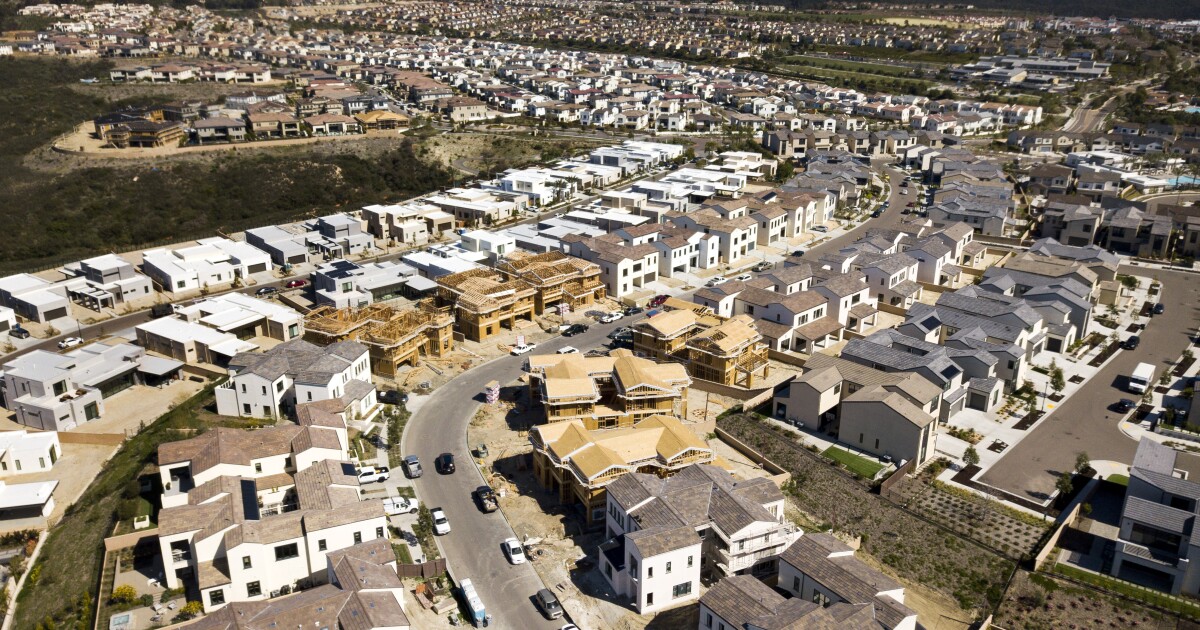
The Carmel Valley Community Planning Board had a strong reaction to the passing of Senate Bill 9, which streamlines a homeowner’s ability to build a duplex or subdivide an existing lot, allowing for a maximum of four units on a single-family parcel.
SB 9, also known as the California Housing Opportunity and More Efficiency (HOME) Act, aims to address the housing shortage and affordability crisis by allowing increases of smaller-sized units and multi-family housing in existing single-family neighborhoods.
SB 9 passed the Assembly on Aug. 26 and it now moves onto the governor’s desk.
At the Aug. 26 meeting, planning board members shared their concerns about how SB 9’s “one size fits all” approach to upzoning will impact Carmel Valley neighborhoods and the local planning process.
“We’re sort of losing local control of our planning and zoning issues and now it’s being controlled by the state,” said planning board chair Frisco White. “They’re not in the trenches that we are in so it’s sort of disheartening for someone outside of our community trying to control how we live, how we plan and how we zone our uses.
“That bothers me more than the fact of (adding) density.”
SB 9 was authored by Senate President Pro Tempore Toni Atkins, who represents Carmel Valley. The bill is the product of multiple years of work and Atkins said the intent of the bill is to expand rental and home ownership opportunities for more families.
“Growing up, my family moved between rentals—some better than others, but none of them ‘ours.’ Even though my mom and dad clocked into honest jobs their whole lives, the idea that the Atkins family could own a home of our own was hardly a goal—it was a far off fantasy. Today, too many hard-working California families are saying the same. With SB 9, we have the chance to change that,” said Atkins in a news release. “This bill would give homeowners the tools to help ease our state’s housing shortage while creating a new source of income in their own backyard. It would allow our communities to welcome new families to the neighborhood and help more folks set foot on the path to buying their first home.”
The bill excludes coastal zones, historic districts and high fire zones and owner occupancy requirements have been built in: a homeowner is required to live in one of the units for three years from the time they get approval for a lot split. Additionally, the bill prohibits lot splits on adjacent parcels by the same individual to prevent investor speculation.
The Assembly also recently passed SB 10, which authorizes local governments to rezone neighborhoods for increased housing density up to 10 homes per parcel plus four ADUs (accessory dwelling units or “granny flats”). To be eligible, the area must be considered “urban infill” or be located within a half-mile radius of a major transit hub.
CV Planning board member Debbie Lokanc was opposed to both bills.
“Streamlining the development process is the antithesis of why we’re here tonight,” Lokanc said. “The streamlined development process only benefits the developer, it doesn’t really benefit the community …the character of Carmel Valley and other communities is really important. To streamline it is taking our community character, integrity out of our hands and putting it into the state’s.”
Per Atkins’ statement, she believes the bill strikes a balance between granting flexibility to homeowners and protecting local control. To her, one of the critical aspects of SB 9 is that it would allow more families the option to pursue their version of the California Dream—whether that means building a home for an elderly parent to live in, creating a new source of income or being welcomed into a new neighborhood: “It’s about giving parents the chance to pass on wealth to their children and giving neighbors the chance to make our communities more inclusive,” she said.
Under SB 9, not every single family lot would be split or every home demolished and replaced with four new units. Cole Reed, a representative for Atkins, cited a report by the Terner Center for Housing Innovation at UC Berkeley, which found that about 1.5 % of single-family parcels in the state would be economically feasible to benefit from SB 9.
“It’s probably not going to have as big of an impact as people think that it would,” Reed said.
Vice Chair Barry Schultz extended an invitation for Senator Atkins to come visit the planning board at a future meeting to talk about this trend.
“Locally we’ve been doing quite a bit to address our housing needs and yet we’re now saddled with the state doing the same thing,” said Schultz , referencing the city’s Complete Communities initiative and Blueprint SD, the new framework to help shape community development. “I would love for the senator to come and talk to us about what she envisions happening to this community as a result of these bills. I would like to understand the potential impact on Carmel Valley and the justification for why it’s the best thing for the community.”
Reed said he would pass along the invite. The board next meets on Sept. 23.
"impact" - Google News
September 01, 2021 at 06:08PM
https://ift.tt/3mSxaDY
Carmel Valley board questions local impact of housing bill, SB 9 - Del Mar Times
"impact" - Google News
https://ift.tt/2RIFll8
https://ift.tt/3fk35XJ
Bagikan Berita Ini















0 Response to "Carmel Valley board questions local impact of housing bill, SB 9 - Del Mar Times"
Post a Comment